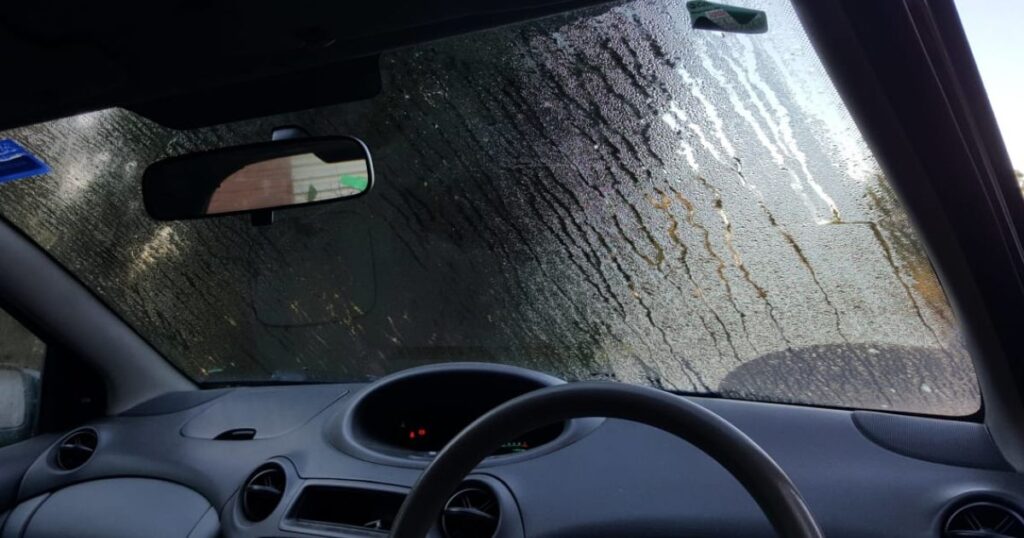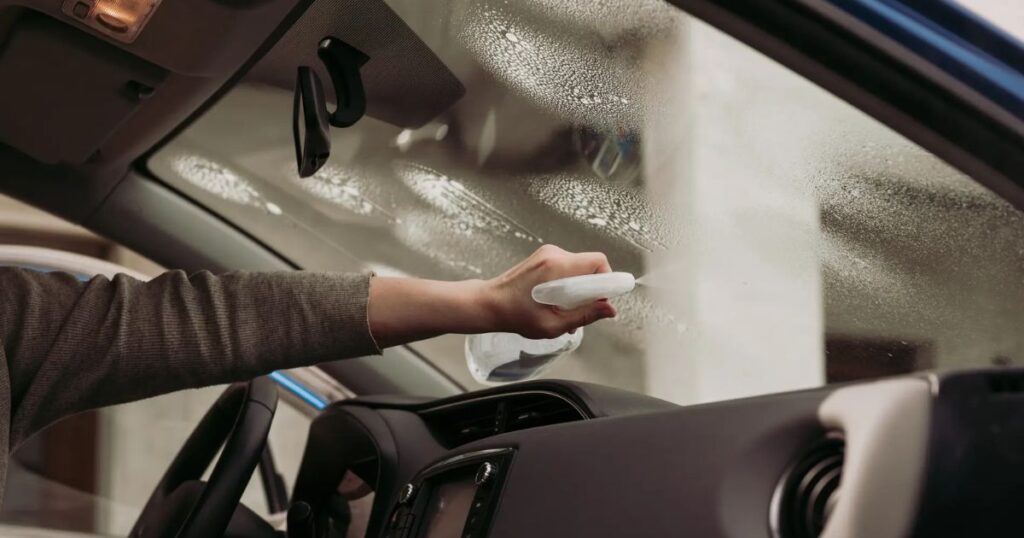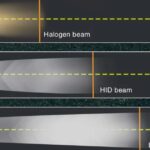Introduction
Have you ever stepped into your car on a chilly morning, only to be greeted by a thick fog obscuring your windshield? Or perhaps you’ve noticed water droplets forming inside your windows, reducing visibility and creating a damp, unpleasant atmosphere within your vehicle. These are all signs of condensation, a common issue that can be frustrating and potentially hazardous for drivers.
Condensation inside a car is not just an inconvenience; it directly results from scientific principles and can occur due to various factors. Understanding the causes of this phenomenon is crucial for addressing it effectively and ensuring a comfortable and safe driving experience.
In this comprehensive guide, we’ll explore the science behind condensation, identify the common culprits, and provide practical solutions to help you maintain a clear windshield and a dry, cozy interior.
The Science Behind Condensation Inside Cars

To grasp the concept of condensation inside cars, it’s essential to understand the basic principles of moisture and humidity. Warm air has a higher capacity to hold water vapor than cooler air.
When this warm, moist air encounters a cooler surface, such as your car’s windshield or windows, it cools down, reducing its ability to retain the same amount of moisture. As a result, the excess moisture condenses and forms water droplets on the cooler surfaces.
This phenomenon is particularly noticeable inside vehicles because the interior temperature can vary significantly from the outside environment, especially during cold mornings or rainy days. The windshield, the largest glass surface in the car, is often the prime target for condensation due to its rapid cooling or heating.
Common Causes of Condensation Inside Your Car
While condensation is a natural process, several factors can contribute to its occurrence inside your vehicle. Let’s explore some of the most common causes:
Temperature Differences Between Interior and Exterior
One of the primary triggers of condensation inside a car is the significant temperature disparity between its interior and the outside environment.
As the day transitions into night or as dawn approaches, rapid temperature changes can cause your car’s internal temperature to fluctuate, leading to condensation on the windshield and windows.
For example, imagine leaving your car parked outside on a hot summer day. As the sun sets and the outside temperature drops, the warm air inside your car will cool down, causing moisture to condense on the cooler interior surfaces.
Quick Tip: To mitigate the effects of temperature differences, consider parking in a garage or shaded area whenever possible. Using sunshades or windscreen covers can also help maintain a consistent internal temperature and reduce the likelihood of condensation.
Wet or Damp Items Inside the Car
Another contributing factor to a foggy windshield can be wet or damp items left inside your car, such as umbrellas or jackets, after a rainy day. These items release moisture into the air, increasing the overall humidity levels within the vehicle and the chance of condensation forming on the windows and windshield.
Real-Life Example: Imagine you’ve just come in from a downpour, and your umbrella and jacket are soaked. If you leave them inside your car, the moisture from these items will evaporate into the air, potentially causing condensation on the cool surfaces of your windshield and windows.
Preventive Measure: To avoid this issue, it is best to remove any wet or damp items from your car as soon as possible. Alternatively, you can invest in moisture absorbers, which can help keep your car’s interior dry and your windshield clear.
Faulty Seals and Leaks
Damaged seals around your car’s windows, doors, or sunroofs can allow external moisture to enter the interior, contributing to condensation problems. These faulty seals create pathways for rain, humidity, or even morning dew to seep in, increasing the overall moisture levels inside your car.
Importance of Regular Inspections: Regular inspections of your vehicle’s seals are essential to ensure they are functioning properly and keeping moisture out. If you notice excessive condensation inside your car, it may indicate a leak or damaged seal that requires professional attention.
Seeking Professional Assistance: If you suspect issues with your car’s seals or leaks, it’s advisable to seek the expertise of professionals who can thoroughly inspect these areas and promptly replace any affected parts if necessary.
Malfunctioning Air Conditioning System
Your car’s air conditioning (A/C) system plays a crucial role in regulating the interior temperature and humidity levels. If the A/C system is not working correctly, it may trap moisture inside the vehicle, further exacerbating the issue of condensation on your windshield and windows.
Proper Maintenance: To tackle problems stemming from a malfunctioning A/C system, it’s essential to ensure that your vehicle’s cooling system is serviced regularly. Keeping the A/C vents clean and free of obstructions can also help prevent excessive moisture buildup and subsequent condensation.
Trapped Water Under Floor Mats or Seats
Accidental spills or water ingress can trap moisture under your car’s floor mats or seats. This trapped moisture can contribute significantly to the overall internal humidity levels, increasing the likelihood of condensation forming on your windshield and windows.
Importance of Thorough Drying: After spills or water ingress incidents, it’s crucial to thoroughly dry out your car’s interior, paying special attention to areas under the mats and seats. Regular checks for signs of moisture and taking immediate action to address any issues can also help prevent windshield fog and condensation.
Easy DIY Solutions to Prevent Condensation Inside Your Car
While some condensation issues may require professional intervention, there are several simple and cost-effective DIY solutions you can try to prevent or mitigate the problem:
- Use Moisture Absorbers: Investing in moisture absorbers, such as silica gel packs or dehumidifiers, can help remove excess moisture from the air inside your car, reducing the likelihood of condensation forming on the windshield and windows.
- Park in a Shaded Area or Garage: As mentioned earlier, parking your car in a shaded area or covered parking can help maintain a consistent internal temperature and minimize the effects of rapid temperature changes that can lead to condensation.
- Utilize Windshield Covers or Sunshades: Windshield covers or sunshades can provide an additional layer of protection against temperature fluctuations, helping to maintain a more stable internal environment and reducing the risk of condensation.
- Regularly Check for Moisture and Spills: Check your car regularly for any signs of moisture or spills, especially under floor mats and seats. Addressing these issues promptly can prevent trapped moisture from contributing to condensation problems.
- Consider Using a Portable Dehumidifier: If you frequently experience condensation issues, a portable dehumidifier designed specifically for use in cars can be an effective solution for removing excess moisture from the air.
By implementing these DIY solutions, you can take proactive steps to minimize the likelihood of condensation forming inside your car, ensuring a more comfortable and safe driving experience.
When to Seek Professional Assistance

While DIY solutions can be effective in many cases, some condensation issues may require the expertise of professional mechanics or auto service providers. Here are a few situations where seeking professional assistance may be necessary:
- Persistent or Severe Condensation Issues: If you have tried various DIY methods but continue to experience excessive condensation inside your car, it could indicate an underlying issue that requires professional diagnosis and repair.
- Suspected Leaks or Faulty Seals: If you notice signs of water leaks or suspect that the seals around your car’s windows, doors, or sunroofs are damaged, it’s best to have a professional inspect and repair these areas to prevent further moisture intrusion.
- Malfunctioning Air Conditioning System: If your car’s A/C system is not functioning properly and contributing to condensation problems, it may require professional servicing or repair to ensure proper operation and maintain optimal interior climate control.
- Regular Maintenance and Check-ups: Even if you’re not experiencing immediate condensation issues, it’s always a good idea to have your car regularly serviced and inspected by professionals. They can identify and address potential problems before they escalate, helping prevent condensation and other issues.
At McCullough NAPA Auto Care in Sandy Springs, Georgia, we have a team of experienced and ASE-certified technicians equipped with the necessary tools and expertise to diagnose and resolve condensation issues in your vehicle effectively.
Our professionals can thoroughly inspect your car’s seals, A/C system, and other potential sources of moisture intrusion and provide the appropriate repairs or replacements to ensure your car maintains a dry, comfortable interior.
Don’t let foggy windows or excessive condensation disrupt your driving experience or compromise your safety on the road. If you’re experiencing persistent condensation issues or suspect an underlying problem, it’s always better to have it checked by professionals rather than risking further complications.
Read Also: Car Making Loud Noises When Accelerating? Here’s What Could Be Wrong (And How To Fix It)
FAQs
How to get rid of condensation inside a car?
Use your car’s defogger and air conditioning system to clear the condensation. Open windows slightly to improve ventilation and remove any damp items from the car. Consider using moisture absorbers or a portable dehumidifier to reduce humidity inside.
How to remove moisture from a car interior?
Remove any wet items from the car and thoroughly dry out areas where water has spilled or seeped. Use moisture absorbers or silica gel packs to help reduce overall moisture. Ensure the air conditioning system is functioning properly, and clean the vents regularly.
How do you fix internal condensation?
Check and repair any faulty seals around windows and doors to prevent moisture ingress. Regularly use the defogger and air conditioning system to manage humidity levels. After any spills, dry the interior thoroughly, especially under floor mats and seats.
How to get rid of mist in the car?
Turn on the defogger and use the air conditioning to dry out the air inside the car. Open the windows slightly to increase airflow and ventilation. Remove damp items from the car and consider using a moisture absorber to reduce humidity levels.
Conclusion
Condensation inside a car is common, but understanding its causes and taking the appropriate steps to address it can significantly improve driving comfort and safety.
Various solutions are available to keep your windshield clear and your car’s interior dry, whether it’s managing temperature differences, removing wet items, addressing faulty seals or leaks, maintaining your A/C system, or dealing with trapped moisture.
Implementing the DIY solutions mentioned in this guide, such as using moisture absorbers, parking in shaded areas, and regularly checking for spills or moisture buildup, can often prevent or mitigate condensation issues on your own.
However, if the problem persists or you suspect more serious underlying issues, don’t hesitate to seek professional assistance from trusted auto service providers like McCullough NAPA Auto Care.







